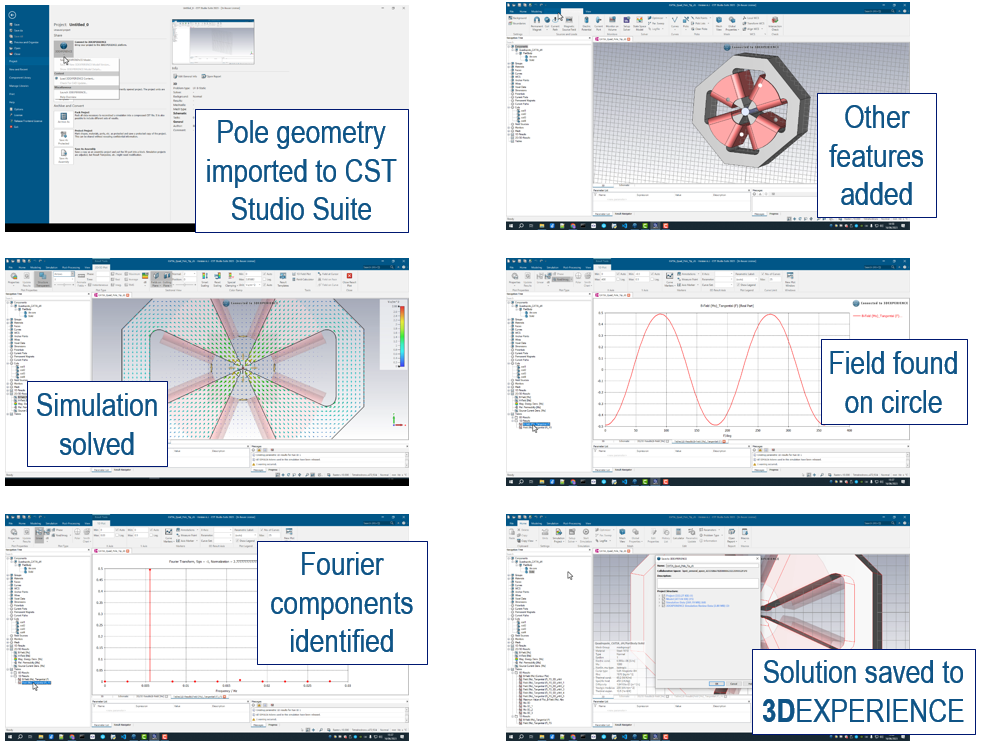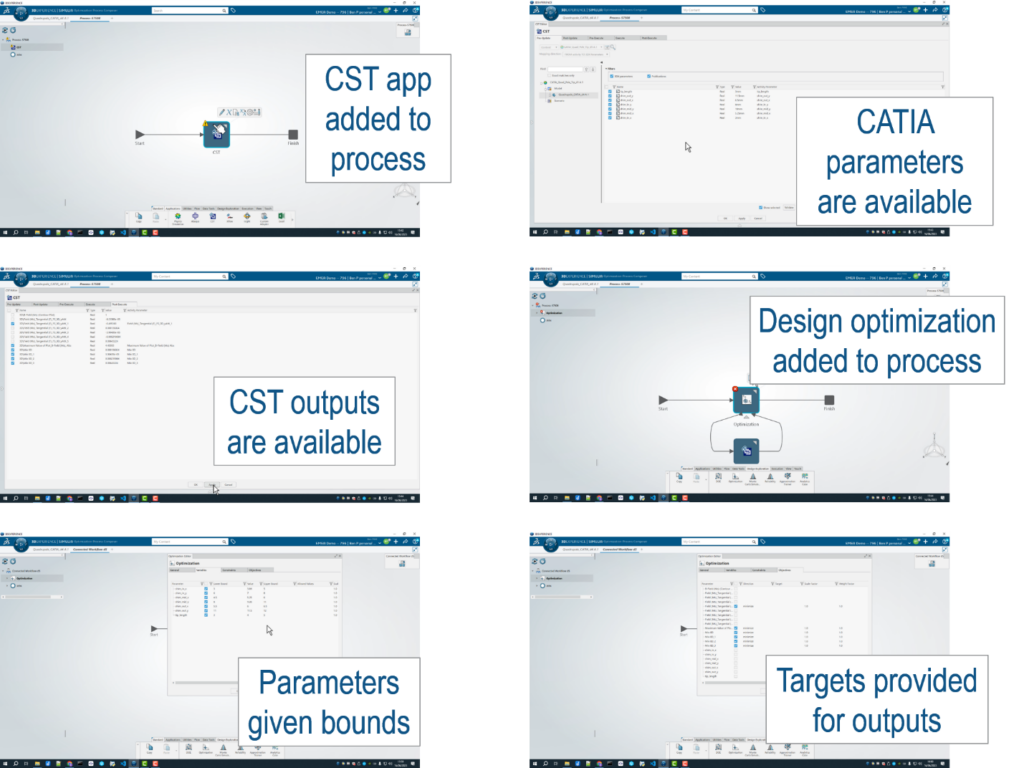Engineers have long sought a concept for a single unified model for design of a magnet. Any meaningful virtual twin model must embody the ability to simulate the electromagnetic, thermal and structural performance of the device, as well as retaining the full geometric, materials and manufacturing information. The virtual twin must be able to respond to a design change and either identify which simulations must be repeated to capture the effect of the design change. As a minimum, it should reliably identify that if simulation results were produced from a previous version of the virtual prototype. The ability to optimize the design accounting for input from multiple areas of physics is also paramount.
This blog post reports how the 3DEXPERIENCE platform has been used to couple CAD using the Mechanical Designer role, electromagnetic simulation tools CST Studio Suite® and Opera®, and optimization capabilities provided by Process Composer. In this connected workflow, the profile of the steel poles of an electromagnetic quadrupole were designed and parametrized using the Mechanical Designer role. The parametrized design was then used as the basis for an optimization, and the physics results were visualized through the 3DEXPERIENCE platform.
Design
A single pole of the magnet was first modeled using the CATIA app Part Design on the 3DEXPERIENCE platform. The pole was fully parameterized, particularly the pole tip that was to be the focus of the following optimization.

Simulation
Using the 3DEXPERIENCE platform, the part was imported into CST Studio Suite. Symmetry was used to create the rest of the quadrupole. Coils, mesh, boundary conditions and analysis options were added. The Magnetostatic solver was run and post-processing conditions defined.

Optimization
Optimization Process Composer was used to build an optimization process using CST Studio Suite driven by the parameterized CATIA geometry. Outputs from the CST Studio Suite model were used to set objectives for the optimization.

Post-processing
Performance Studio was used to perform initial lightweight post-processing of the optimization results. From the initial results, a candidate geometry was selected.

Candidate Geometry
A CAD update of the candidate geometry was automatically performed in CST Studio Suite, and the resulting model re-simulated. It outperformed the initial model on all the relevant criteria.
The force generated on the poles and coils were calculated for subsequent mechanical evaluation. An initial calculation was made of the coil displacements.

Further Work
The next step of this analysis is to expand the multiphysics analysis. The forces from the electromagnetic simulation can be used to drive structural simulations using Abaqus roles on the 3DEXPERIENCE platform. These models can then be added to the optimization loop for a full multiphysics simulation. Ultimately, thermal simulations of electromagnetic losses can also be included.
Conclusion
Magnet design covers many disciplines of physics, and a unified model for magnet design would have many benefits in accelerating and streamlining the magnet development process. The workflow presented in this blog post allowed a quadrupole magnet to be designed with CATIA, simulated with SIMULIA CST Studio Suite and optimized with Process Composer. This workflow was performed all in one common environment, the 3DEXPERIENCE platform.
This approach promises reduced design times and optimal magnet performance. It also allows for a multiphysics approach to magnet analysis, with the magnet’s electromagnetic, thermal and structural mechanical properties – and the interaction between them – all considered at the same time.
Learn more in the on-demand webinar.

Interested in the latest in simulation? Looking for advice and best practices? Want to discuss simulation with fellow users and Dassault Systèmes experts? The SIMULIA Community is the place to find the latest resources for SIMULIA software and to collaborate with other users. The key that unlocks the door of innovative thinking and knowledge building, the SIMULIA Community provides you with the tools you need to expand your knowledge, whenever and wherever.

